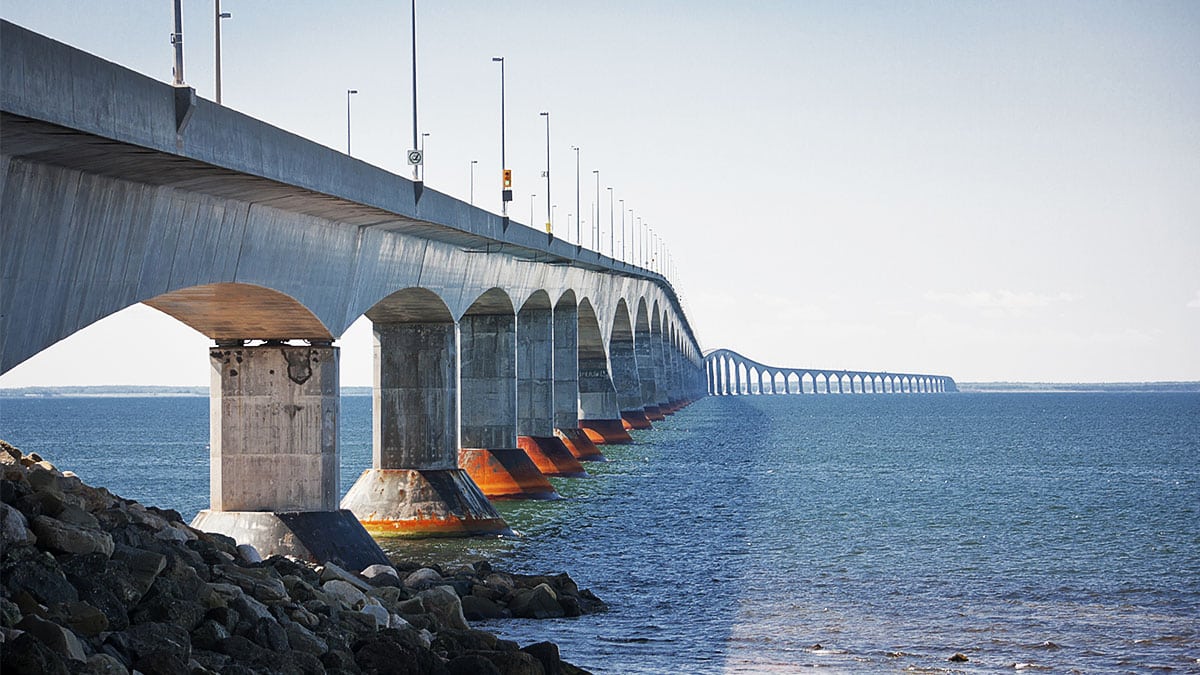Construction of the Confederation Bridge began in 1993 and spans the strait between Prince Edward Island and mainland New Brunswick.
This Canadian design and construction marvel is 12.9km (8 miles) long, making it the longest bridge in the world. More than 10 years after the completion of its construction in 1997, it is considered one of Canada’s top engineering achievements of the 20th century.
Let’s take a look at what set the building of the bridge into motion, as well as the design and construction techniques used that make the Confederation Bridge award-winning.
Architectural Designers Create a “Fixed Link” Between Two Provinces
Following a lot of heated discussion in the 1980’s, the decision to replace the ferry services between PEI and NB with a fixed link was taken to the voting polls. Industry workers such as farmers, fishermen, tourism operators and even residents of PEI had a lot to say about how year-round access to the mainland could affect their lives.
The federal department of Public Works and Government Services selected its favorite bridge design out of many proposed bridge designs from the private sector. Premier Joseph Ghazi asked Prince Edward Islanders to make the final decision on January 18, 1988. Some professionals with architecture training might remember the momentous day when at the polls, close to 60% of Islanders voted “Yes” to the bridge being built.
Construction of the bridge took four years, using over 5000 local workers and finally opened for traffic on May 31st, 1997. The total construction cost was $1 billion.
Design Features of the Confederation Bridge
The Confederation Bridge uses a multi-span, concrete box girder structure due to its incredible length. You may find some of the safety features that engineers incorporated into the bridge’s design interesting if you’re considering taking CAD courses. They include:
- Curves to ensure that drivers remain attentive
- A road surface made from a special mixture that reduces vehicle spray during wet weather
- 1-meter high concrete barrier walls that serve as a windbreak and reduce visual distractions
- Over 7,000 drain ports that allow for runoff of rain and melting snow and ice
Another interesting fact for those interested in CAD training is that the bridge features a hollow corridor through which some utility services are carried between PEI and NB.
Construction & Operation of the Architectural Marvel
Most of the construction of the Confederation Bridge was done at on-shore staging facilities. One of the most important elements of the bridge’s construction is a technique called post-tensioning, which is used to tie the pier bases, shafts and girders together into one solid structure. Through this technique, the bridge is designed to last 100 years.
Today, a dedicated crew of bridge control personnel provides 24 hour-a-day 7 days a week surveillance of the Confederation Bridge via a sophisticated Traffic Management System. The system includes 22 cameras along the bridge’s span as well a weather monitoring system, which provides real-time information on wind speed, wind direction, air and road temperature, humidity, dew point, and the rate of precipitation to the bridge’s control center.
Do you think that the architectural designers of this landmark thought of everything?



